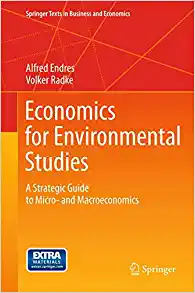

Please explain all parts, please take It if you are confident to give good explanations , clear presentations and answer all parts, or it would hurt your profile, thank you.
Paul Krugman has long argued that the U.S. government response to the 2008-09 recession was inadequate-although it was worth about $800 billion, he thinks it should have been bigger. In a2013 blog post "The Arithmetic of Fantasy Fiscal Policy", Krugman calculates how big his ideal fiscalstimulus would have been.
Let us compare actual US GDP to potential GDP (potential GDP is basically an attempt to measure the natural rate of output). You can see these measures for 2005-12 in the graph below:
mad lomlnal Potlntlll Gran noun-tn: Product 60.. Domltk Product 12,200 10,000 10,400 10,000 15,000 15,200 14,000 [HIIlone of Dollars) 14,400 14,000 13,000 13,200 12,000 2005 2006 200? 2000 2009 2010 20 1 1 2012 Shaded areas Indlcate US recession: - 2015 researdmtloulsfednrg You can see from the graph that the output gap peaks at more than $1 trillion per year. The output gaps in the two years of the recession (2008 and 2009) were roughly: 2008: $430 billion 2009: $1030 billion This gives a cumulative output gap from 2008 2009 of about $1.5 trillion. Because US interest rates were close to zero, there was arguably little scope for conventional monetary stimulus and if the government wanted to boost GDP, then Krugman argues that the only way was greater fiscal stimulus. As we know from the textbook, there is a multiplier from government spending, which was estimated to have a value of about 1.3. 1 a) If we wanted to eliminate the output gap, how much extra spending would have been required over the two year period? As the government multiplier is 1.3 and the output gap is $1.5 trillion we get $1.5x13 = $1.15 trillion. b) If the overall government tax rate in the US is about one third, what would be the net increase in debt from the stimulus spending that you calculated in part (a)? The cost ofthe program was $1.15 trillion, but tax revenue would have risen as well. We know that cumulative GDP rose by $1.5 trillion, and that marginal taxes are about one third, so additional tax revenue should have been about $500 billion. Thus the net change in government debt is just over $650 billion. c) By the end of 2009, actual US GDP was about $14.4 trillion, and the federal-debt-to-GDP ratio was about 67%. What was the US debt in dollar terms? $14.4 trillion x 0.67 = $9.65 trillion. d) f) If the stimulus proposal had been implemented, what would have been the dollar value of US debt by the end of 2009? The dollaryalue would have been $9.65 trillion + $ 0.65 trillion = $10.3 trillion. What would the debt-to-GDP ratio have been at the end of 2009 if the plan had been implemented? Here we need to notice that GDP would have been higher bythe output gap in thatyear ($1.03 trillion}, so we need to divide by $15.43 trillion instead of $14.4 trillion. Thus the debt ratio would have been $10.3 trillion ,1 $15.43 trillion = 67% of GDP (which is basically the same as it actually was}. Suppose the Fed had not been at the zero lower bound. How might this have changed the situation? If interest rates had been substantially above 0%, then the Fed could have stimulated the economy by cutting interest rates rather than (or in addition to} scal stimulus. In fact many economists have argued that there was more room for monetary as well as fiscal stimulus in the wake of the 200809 recession










